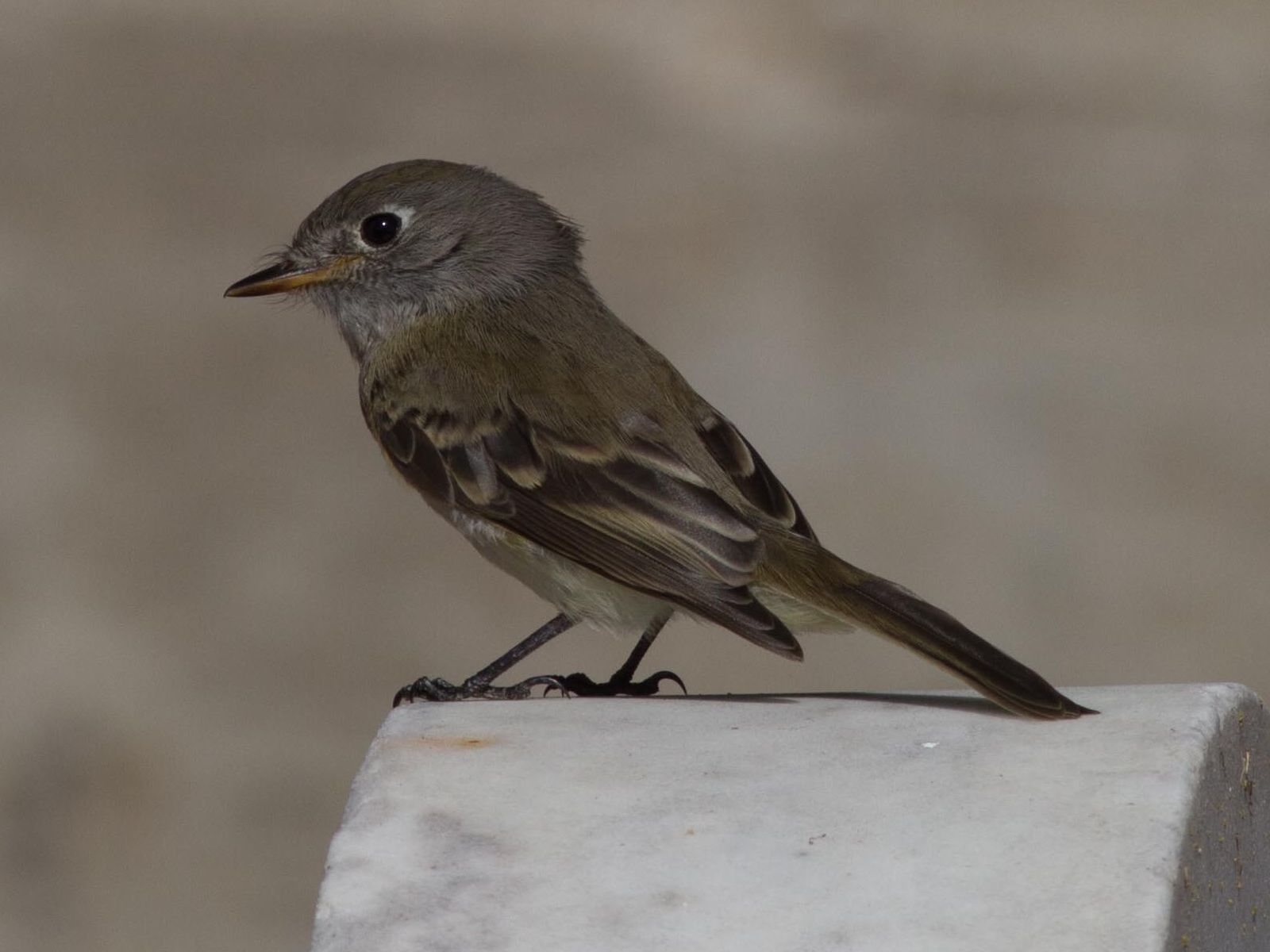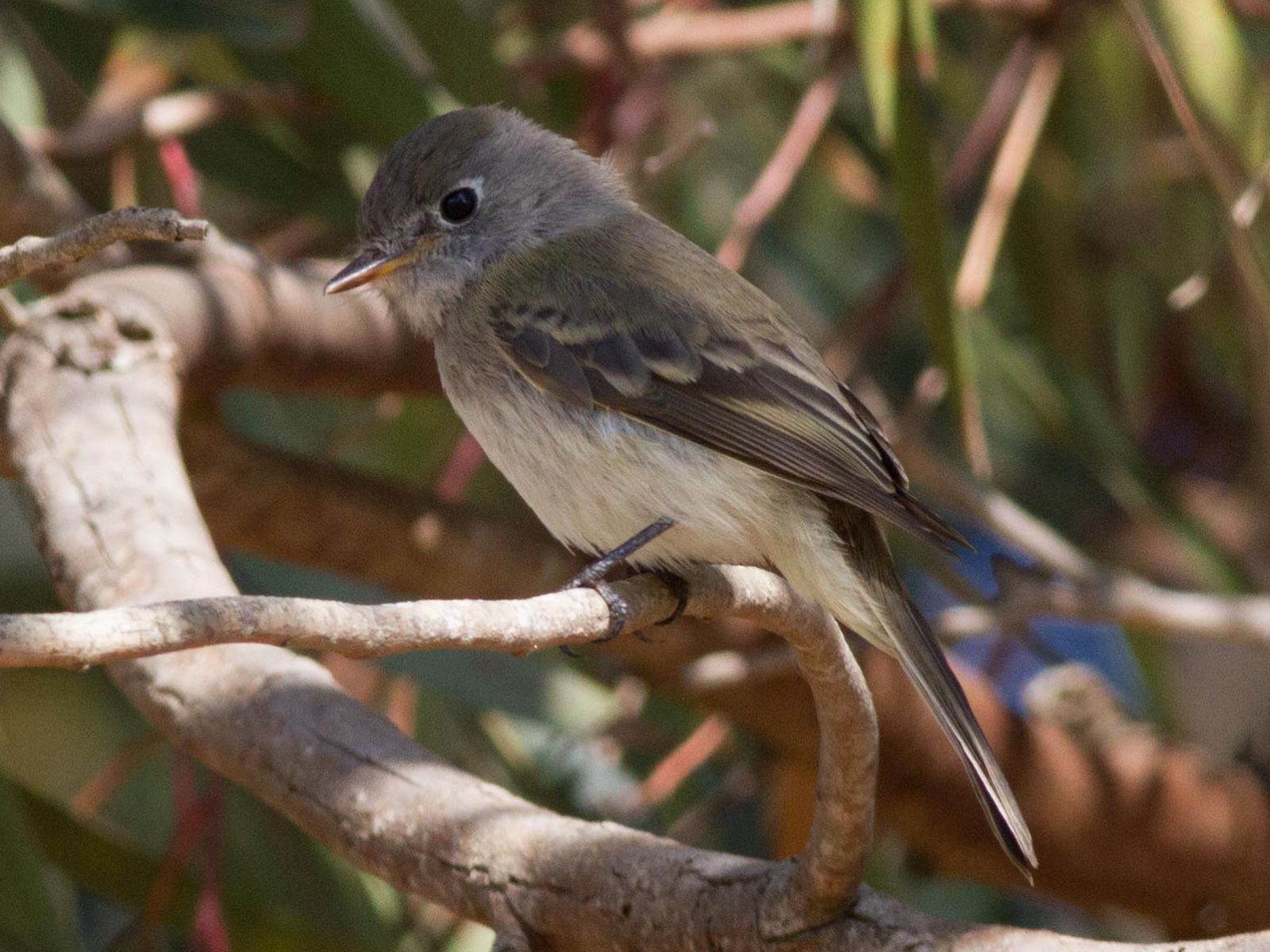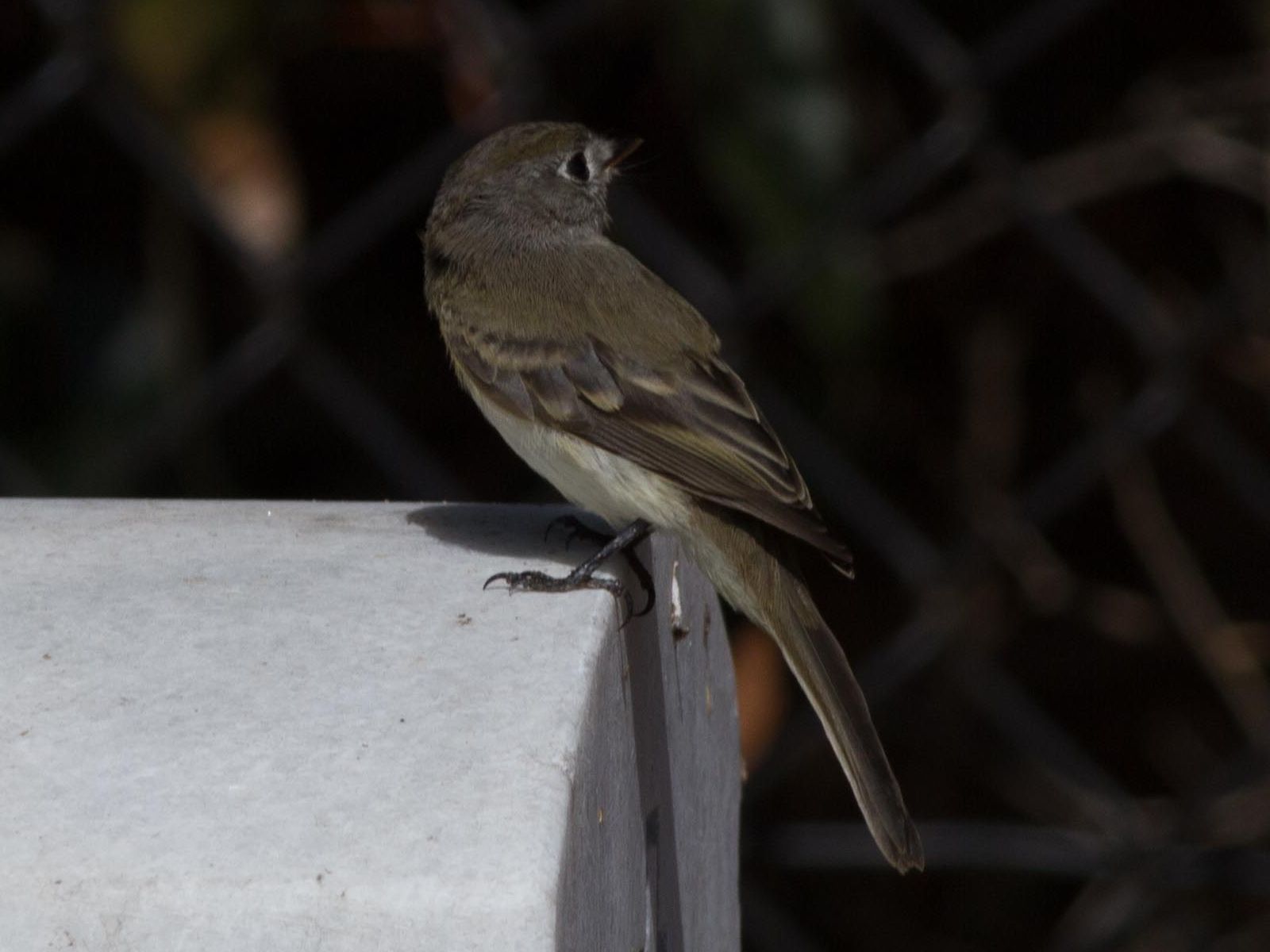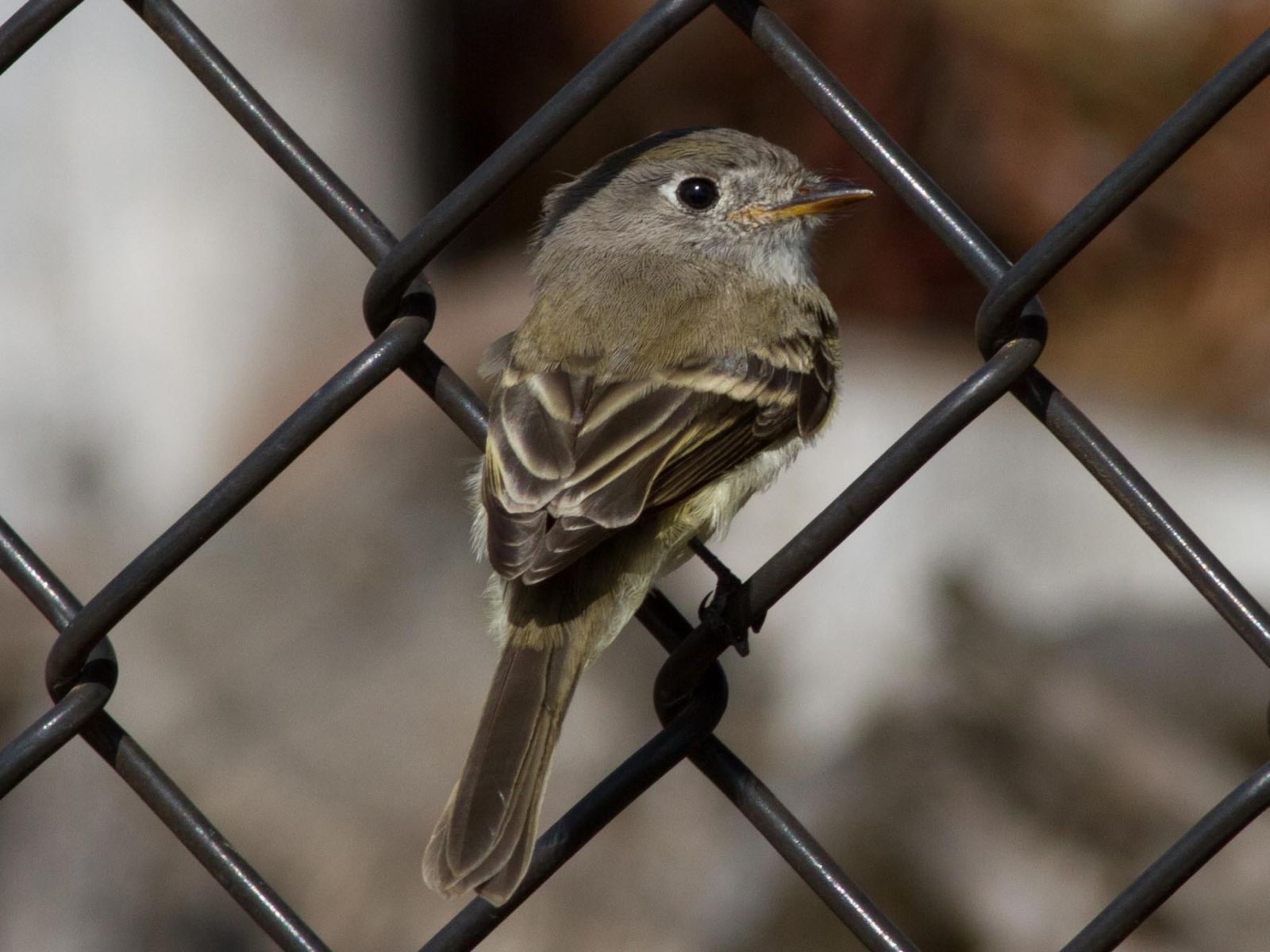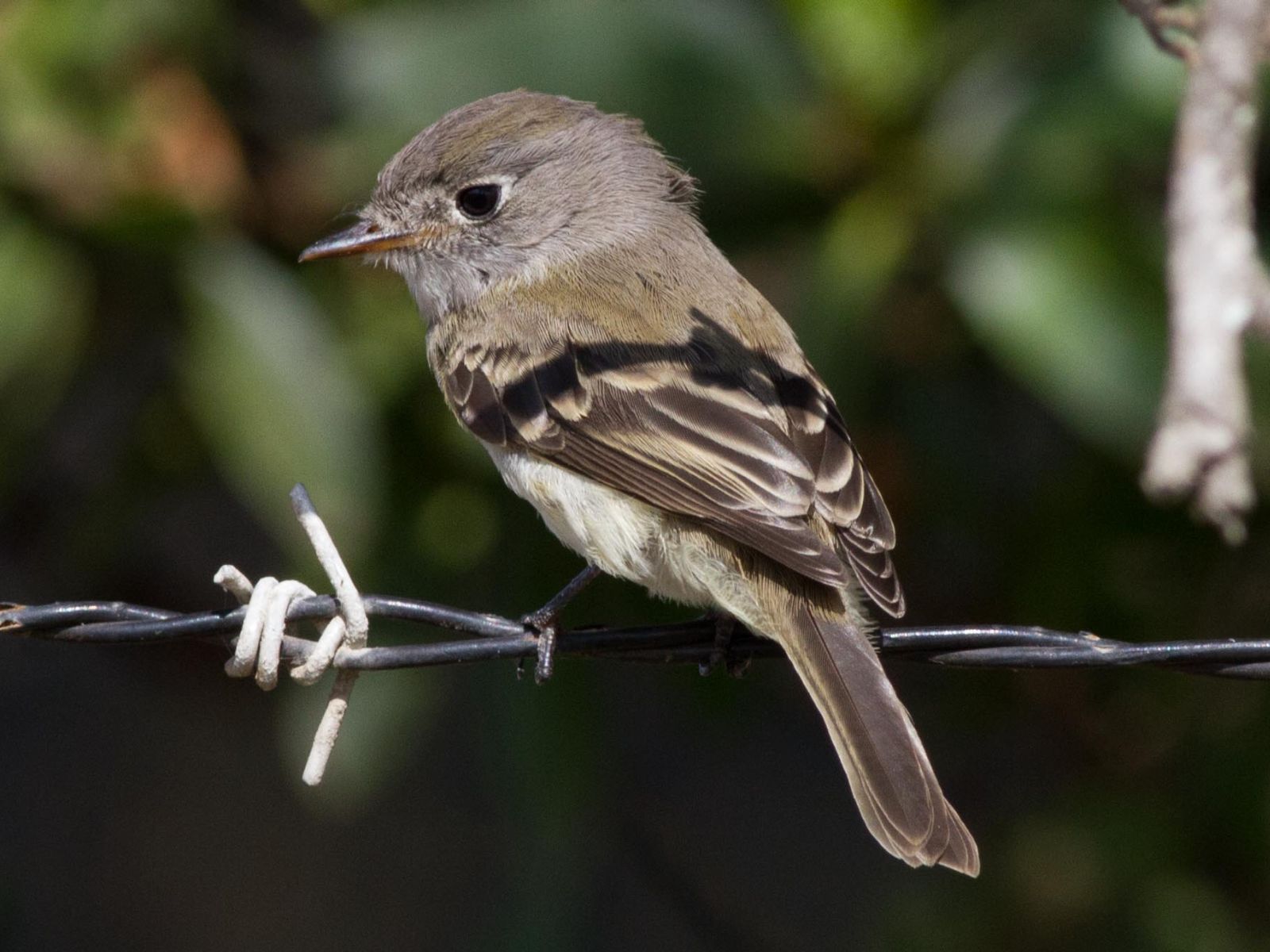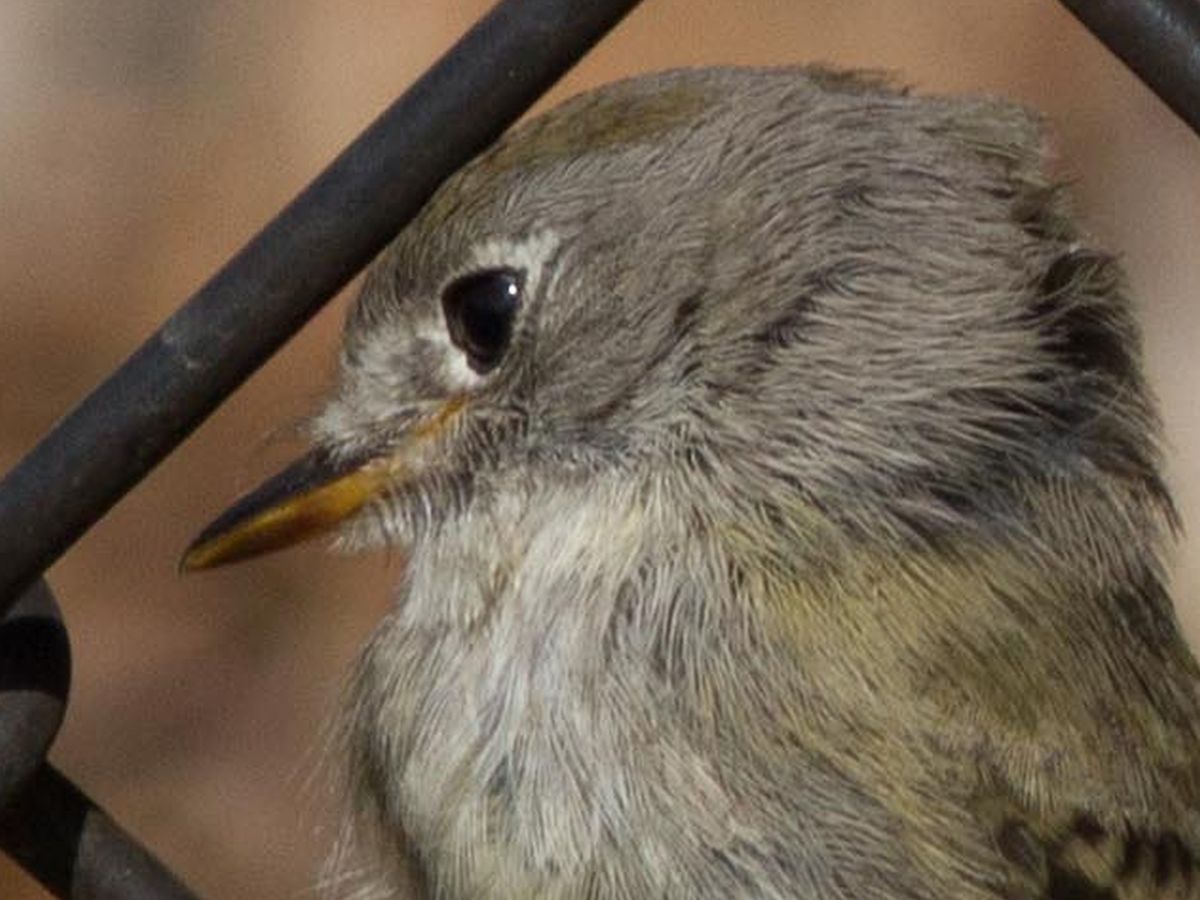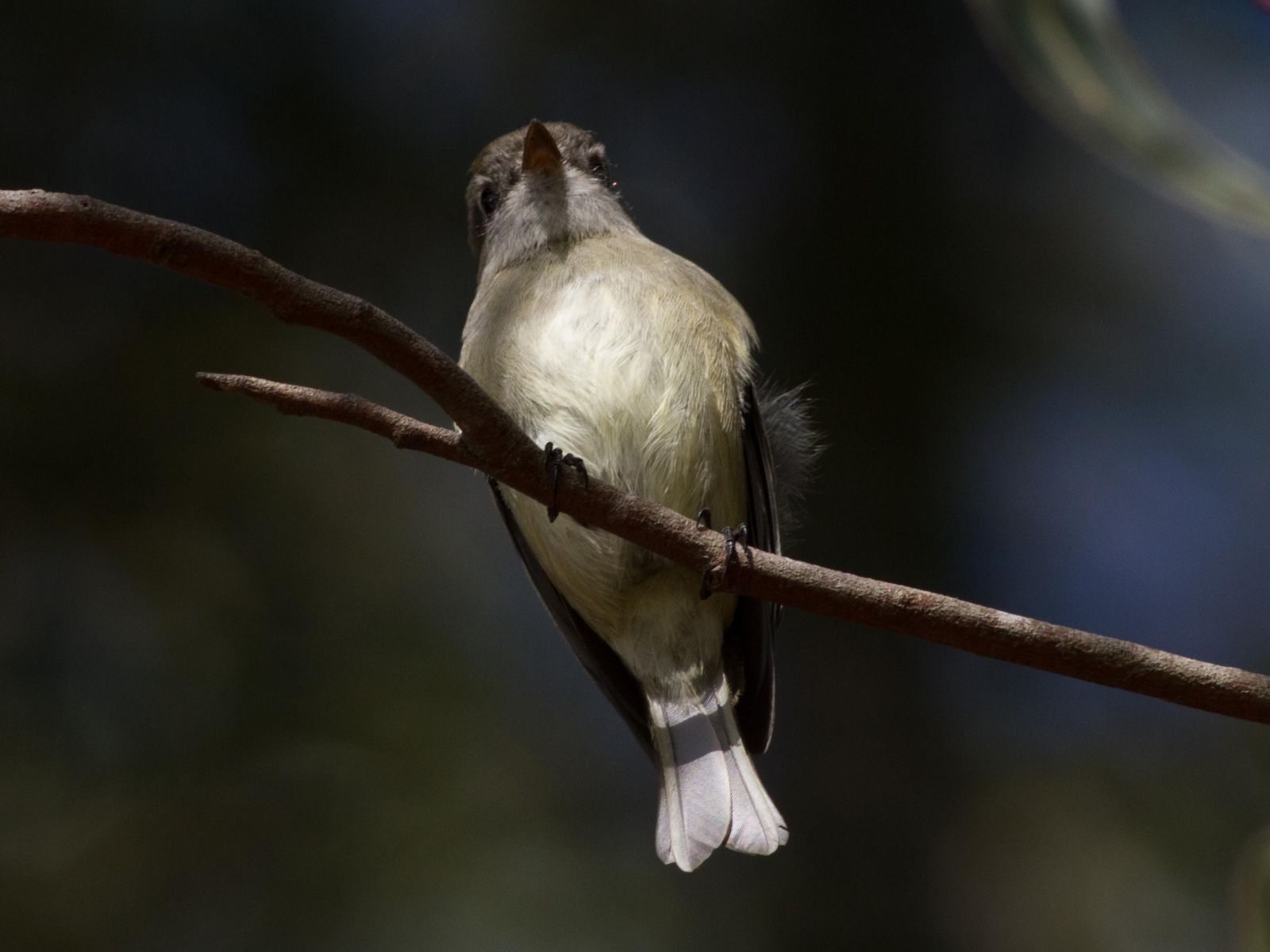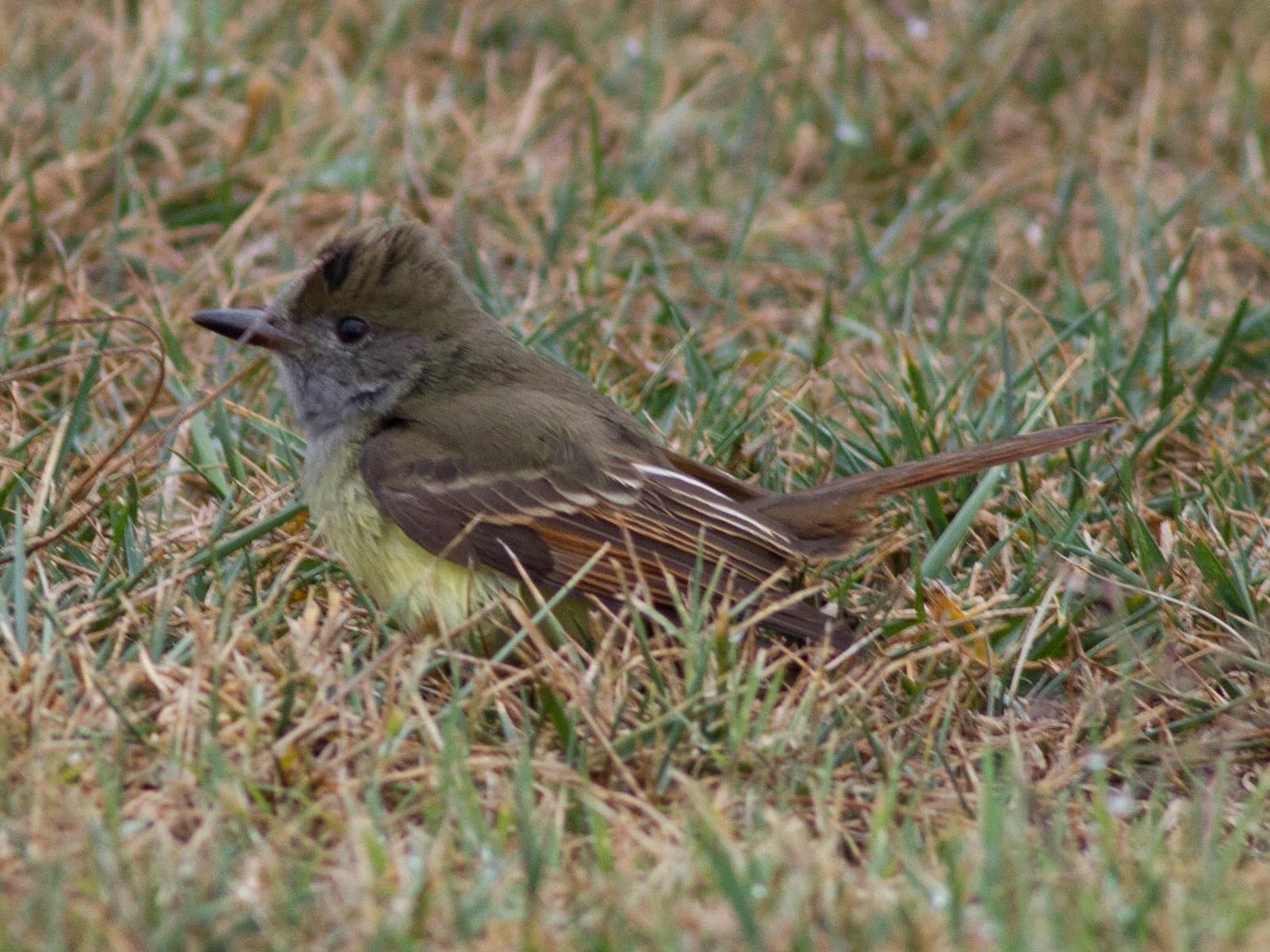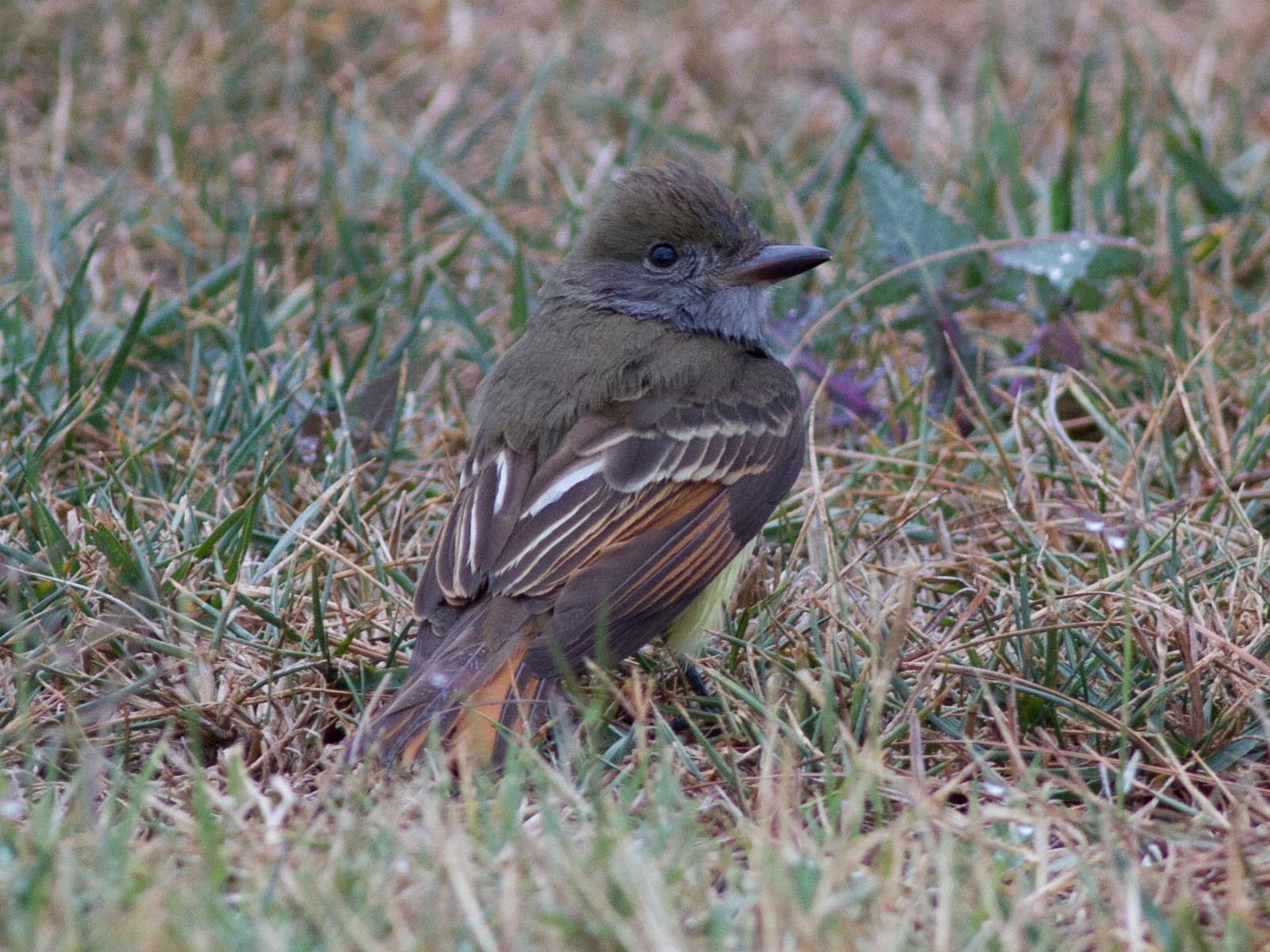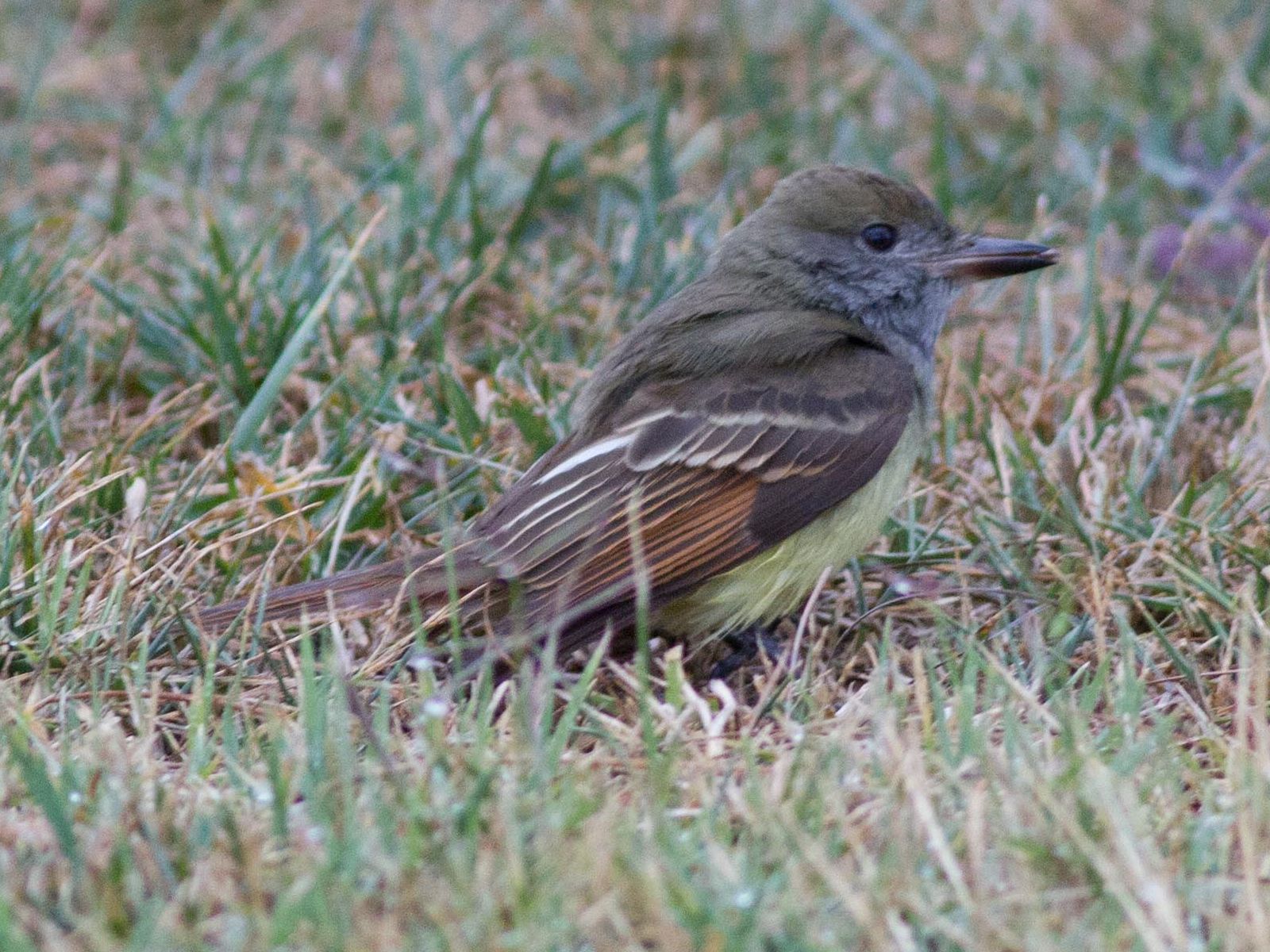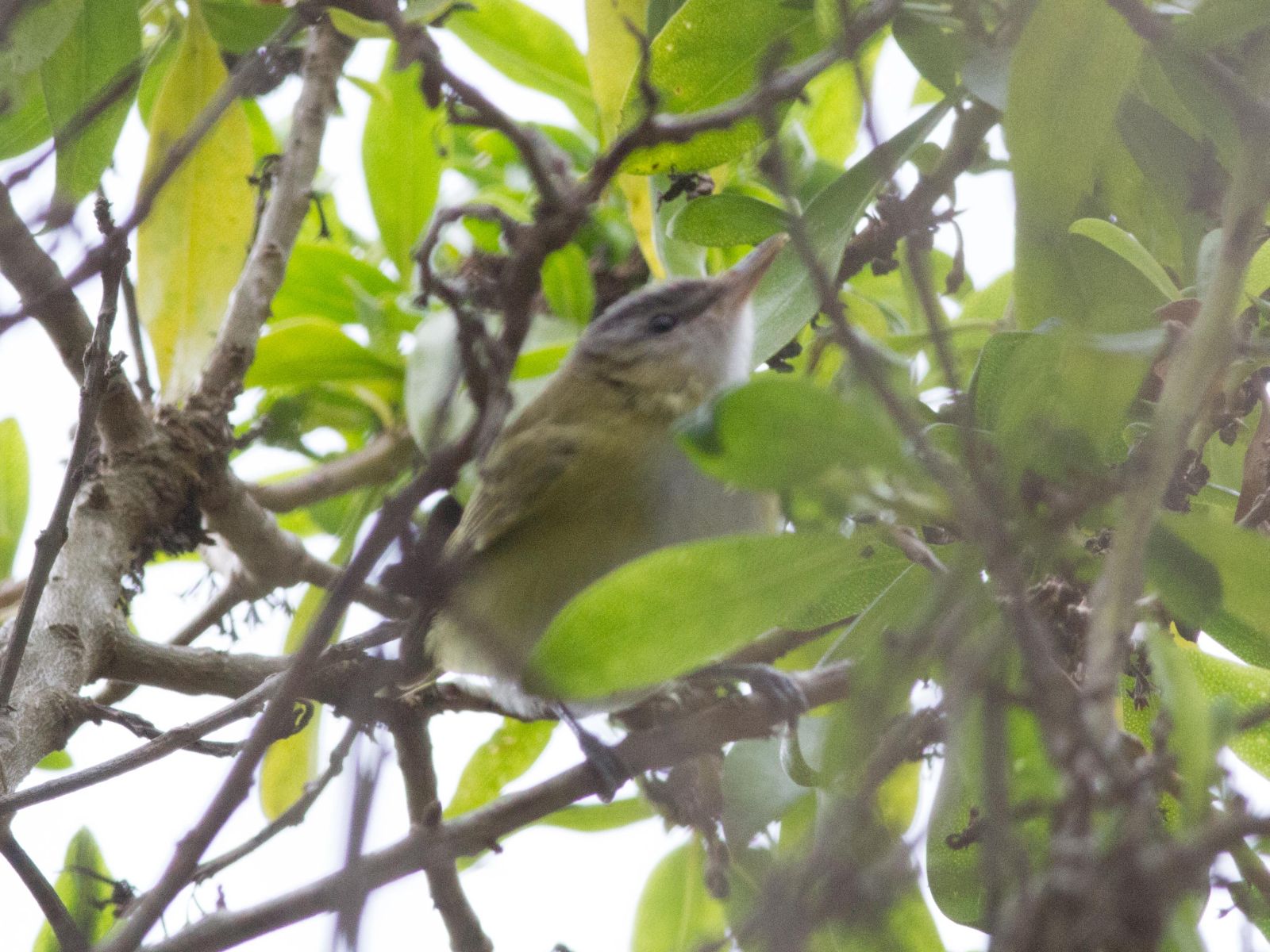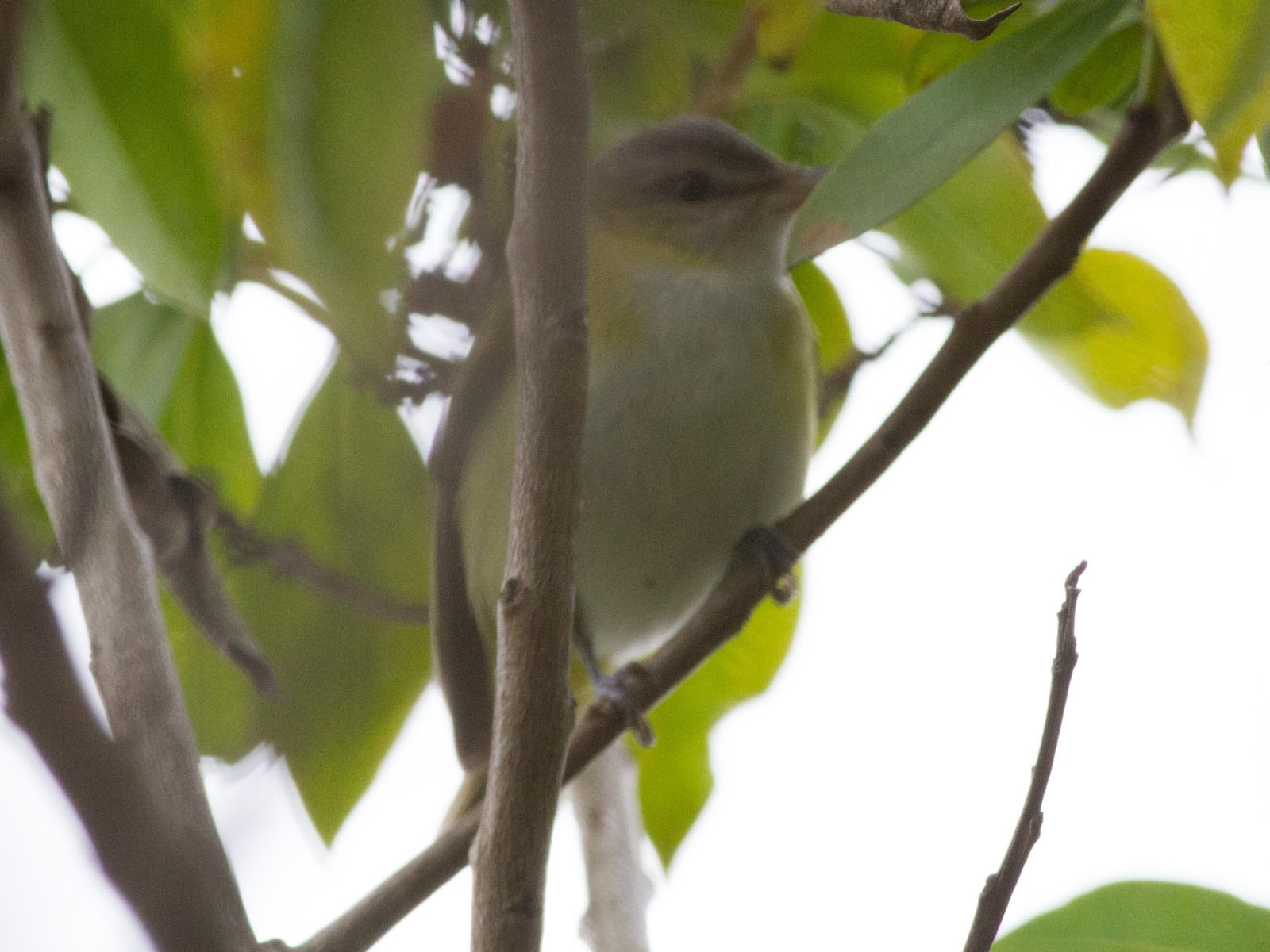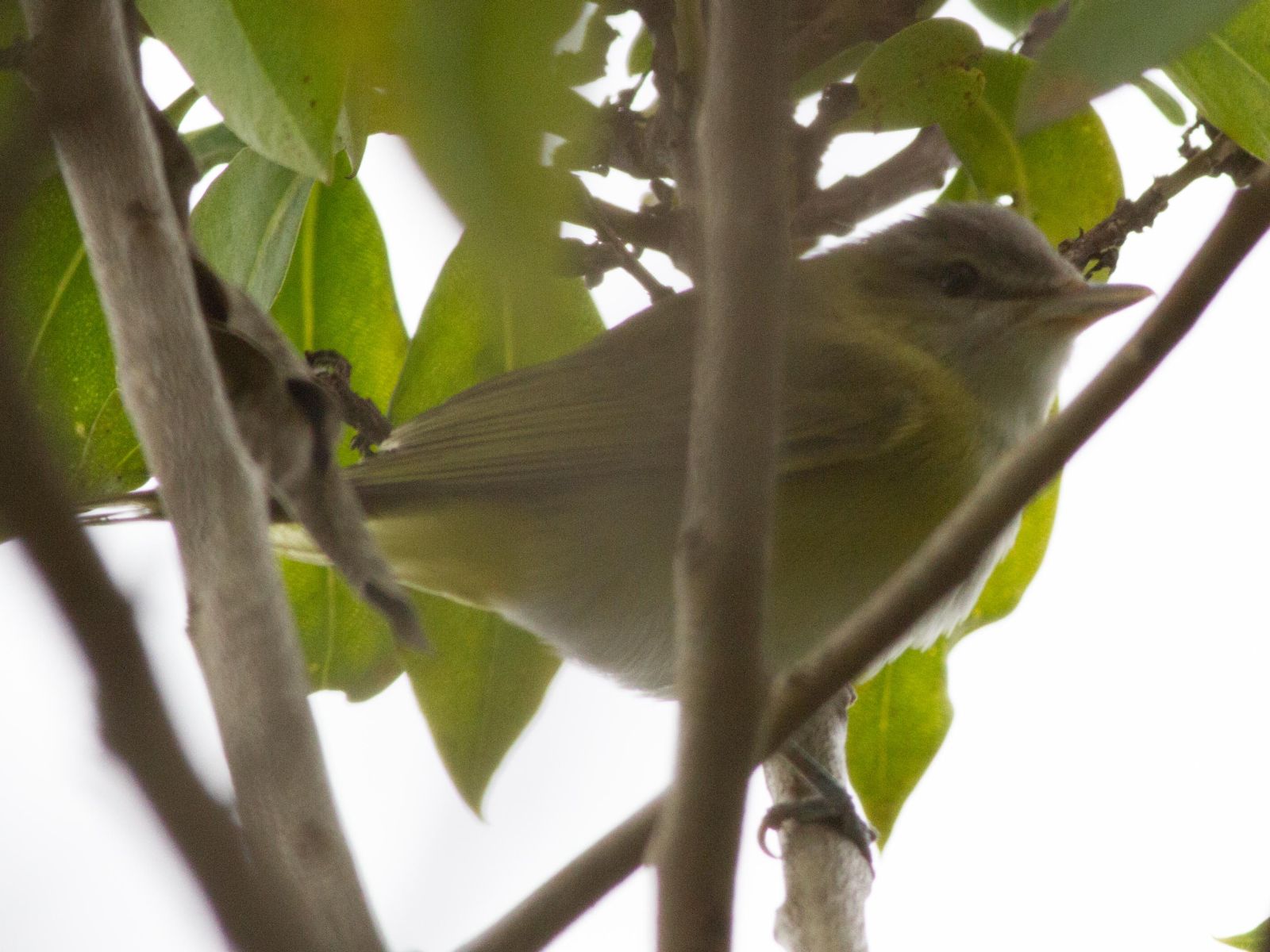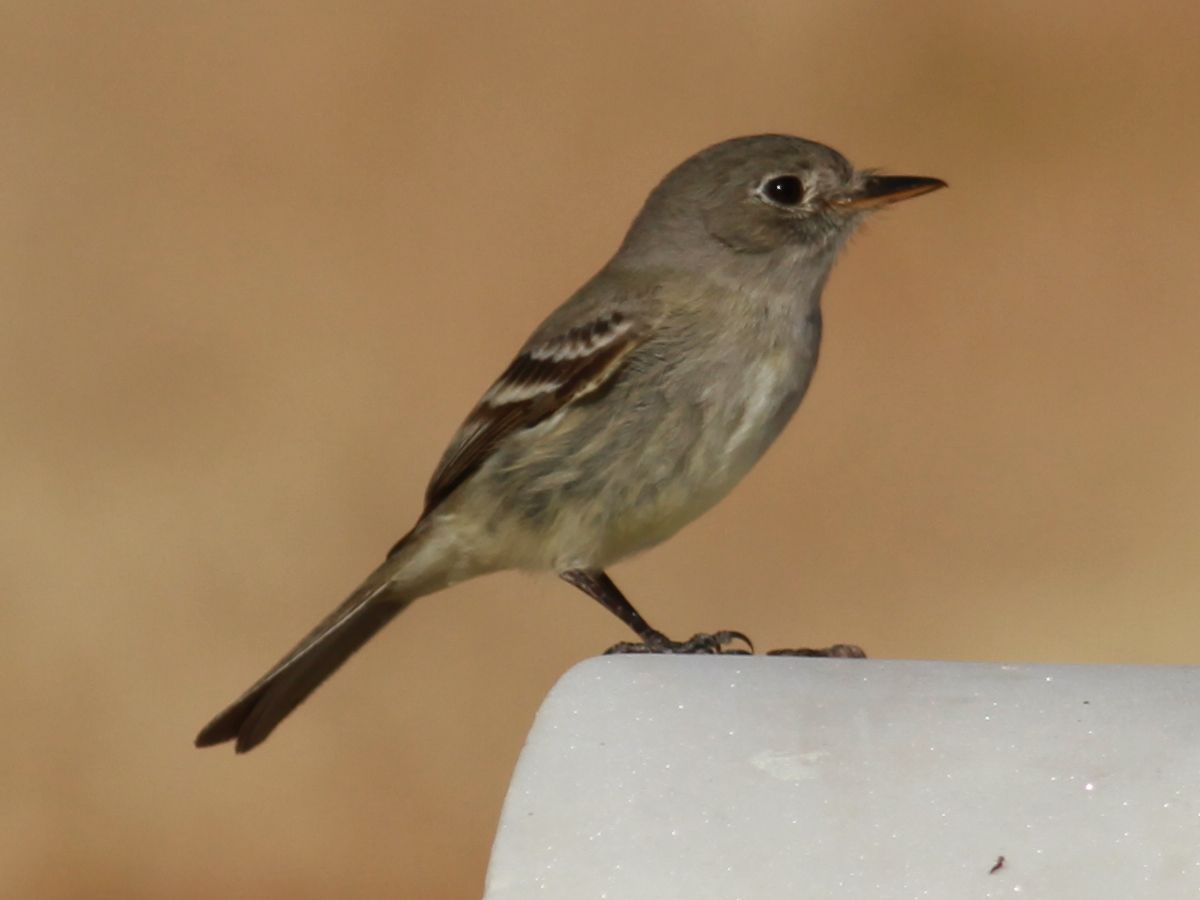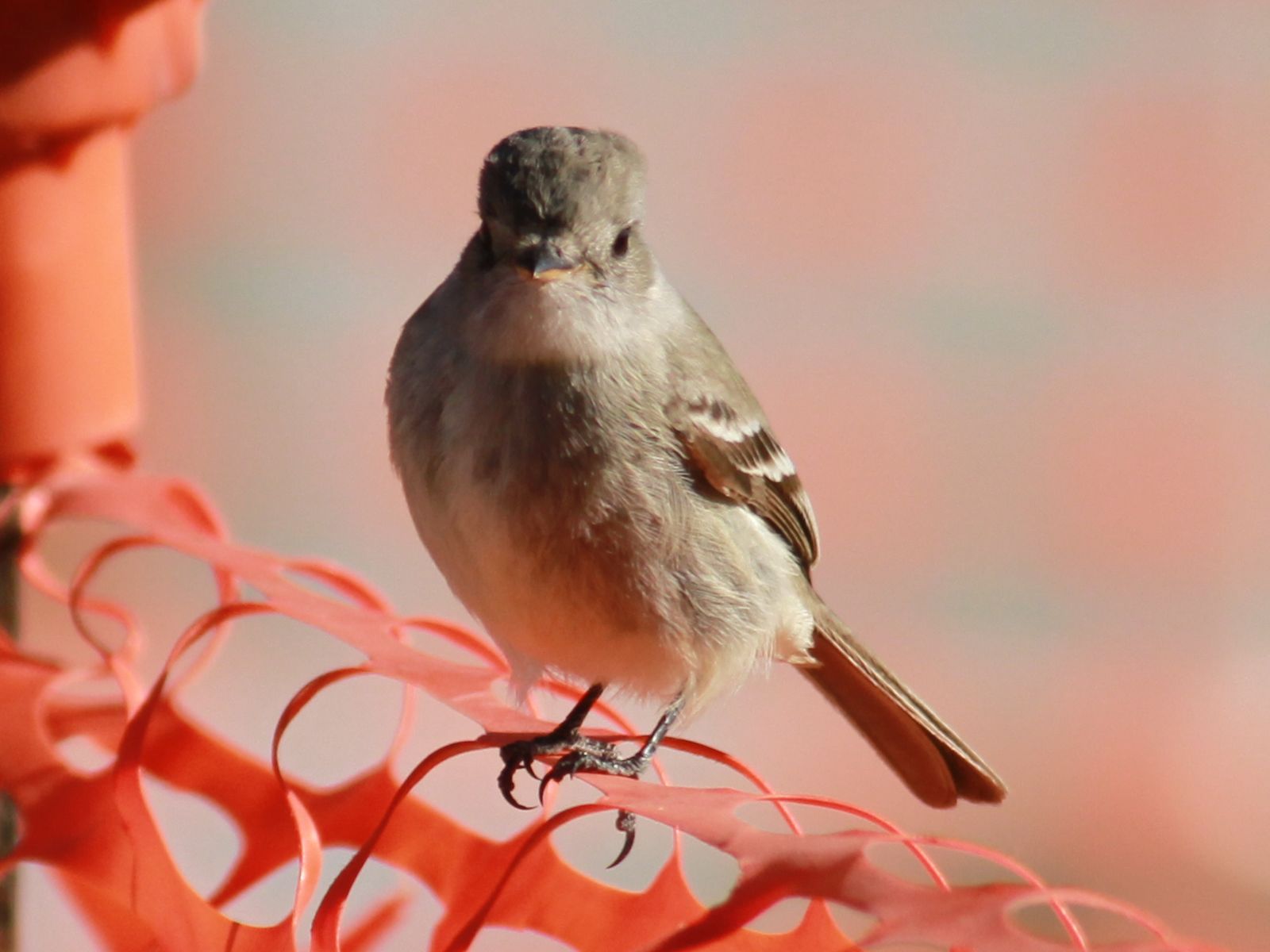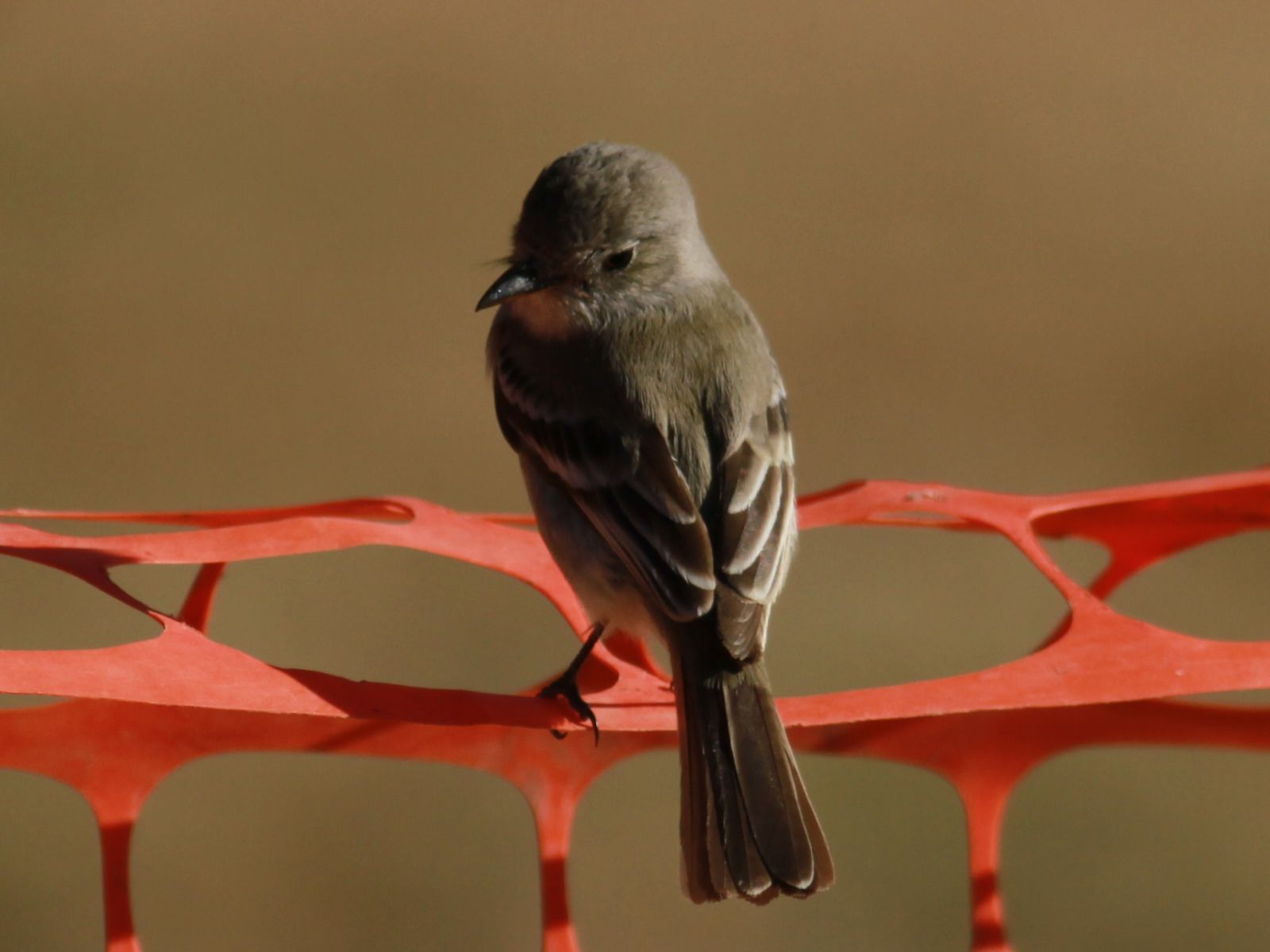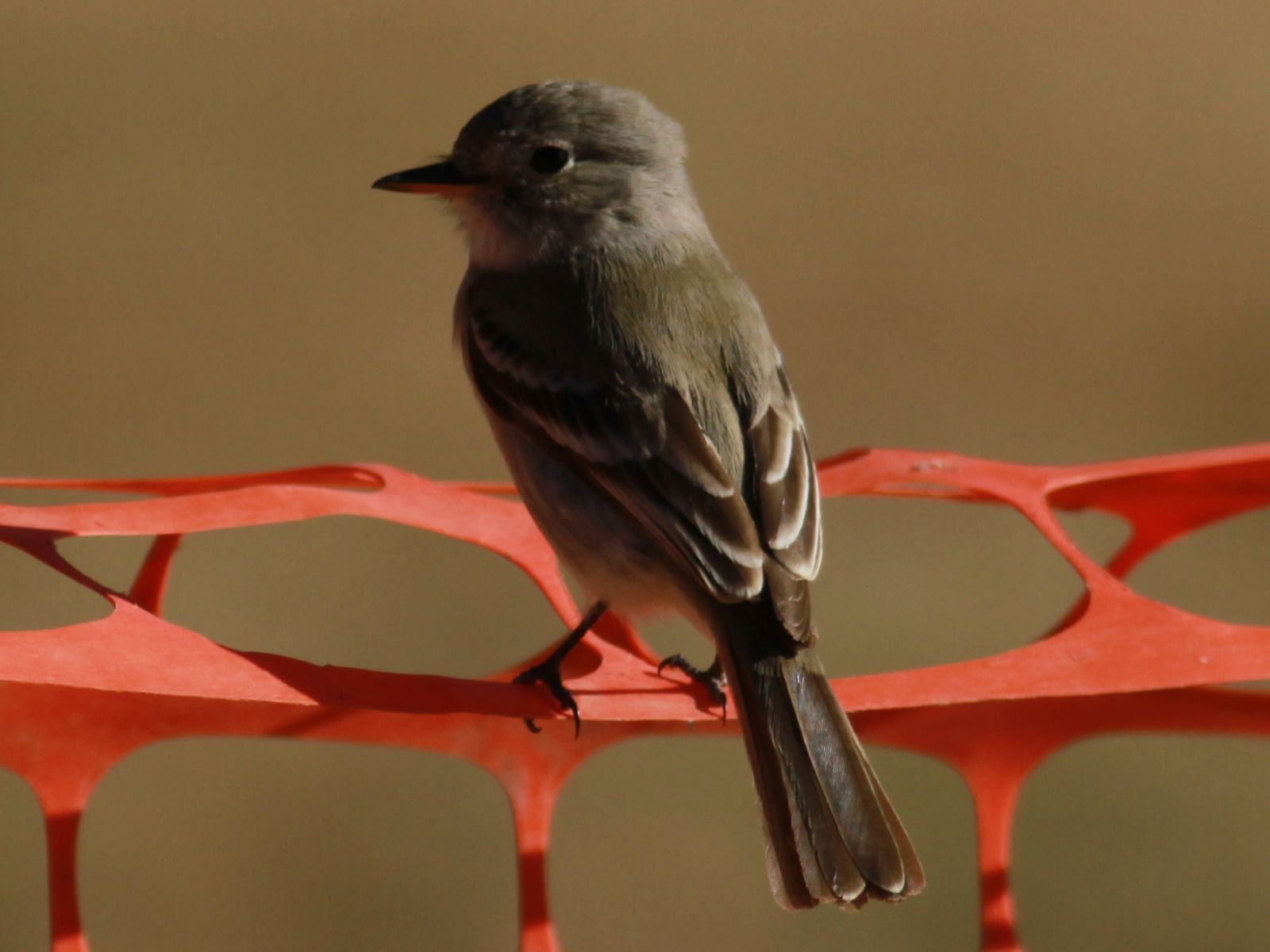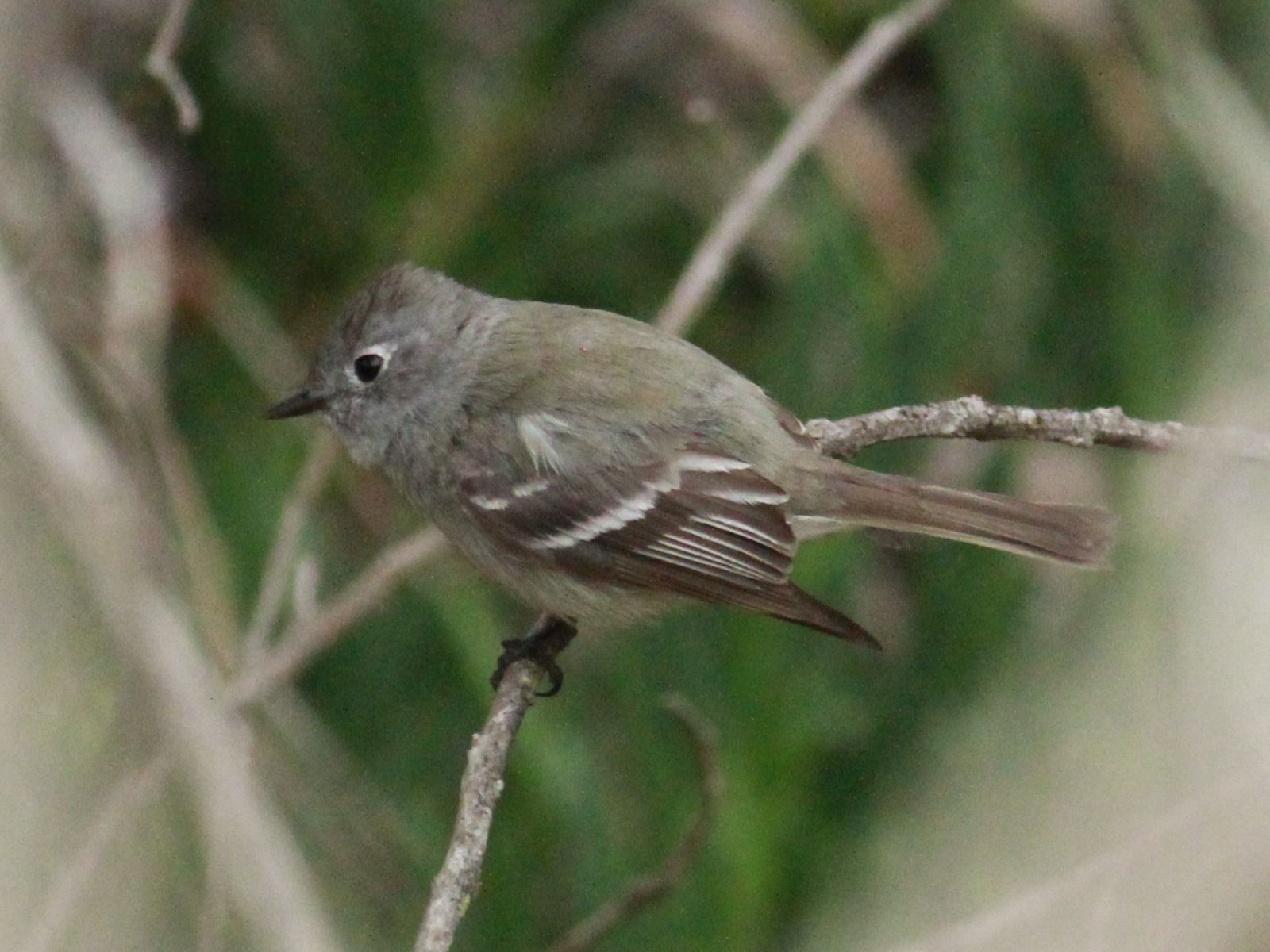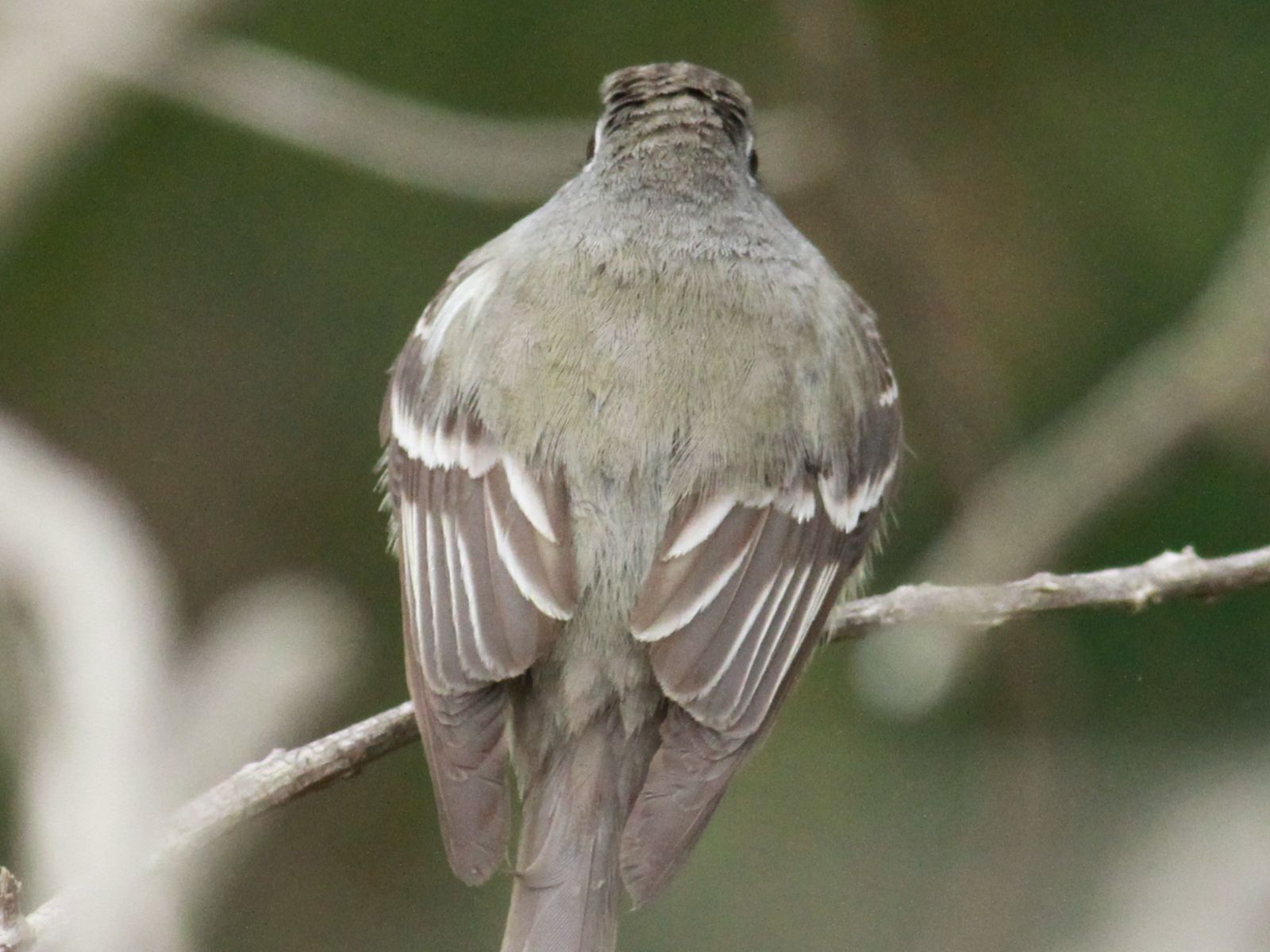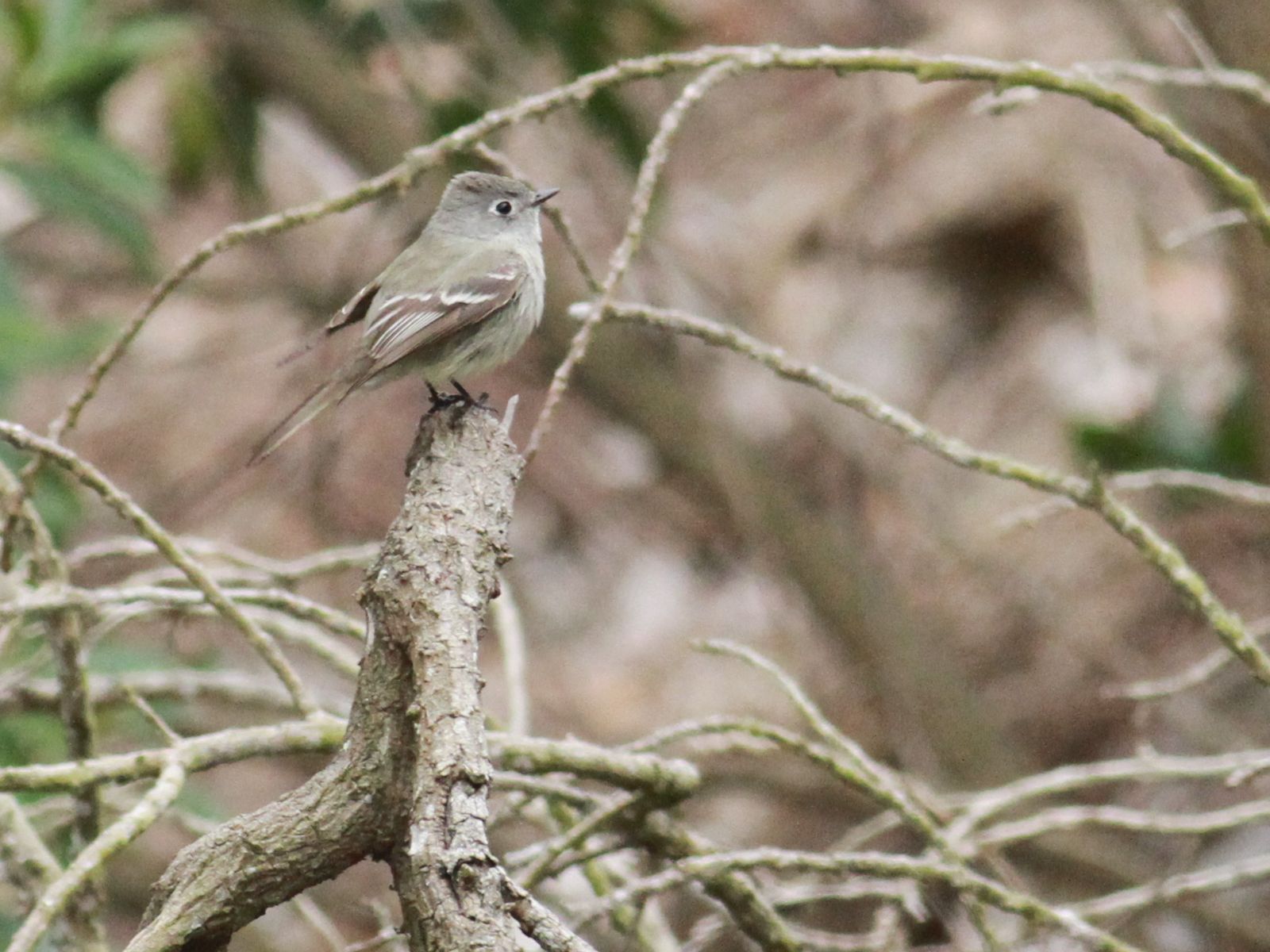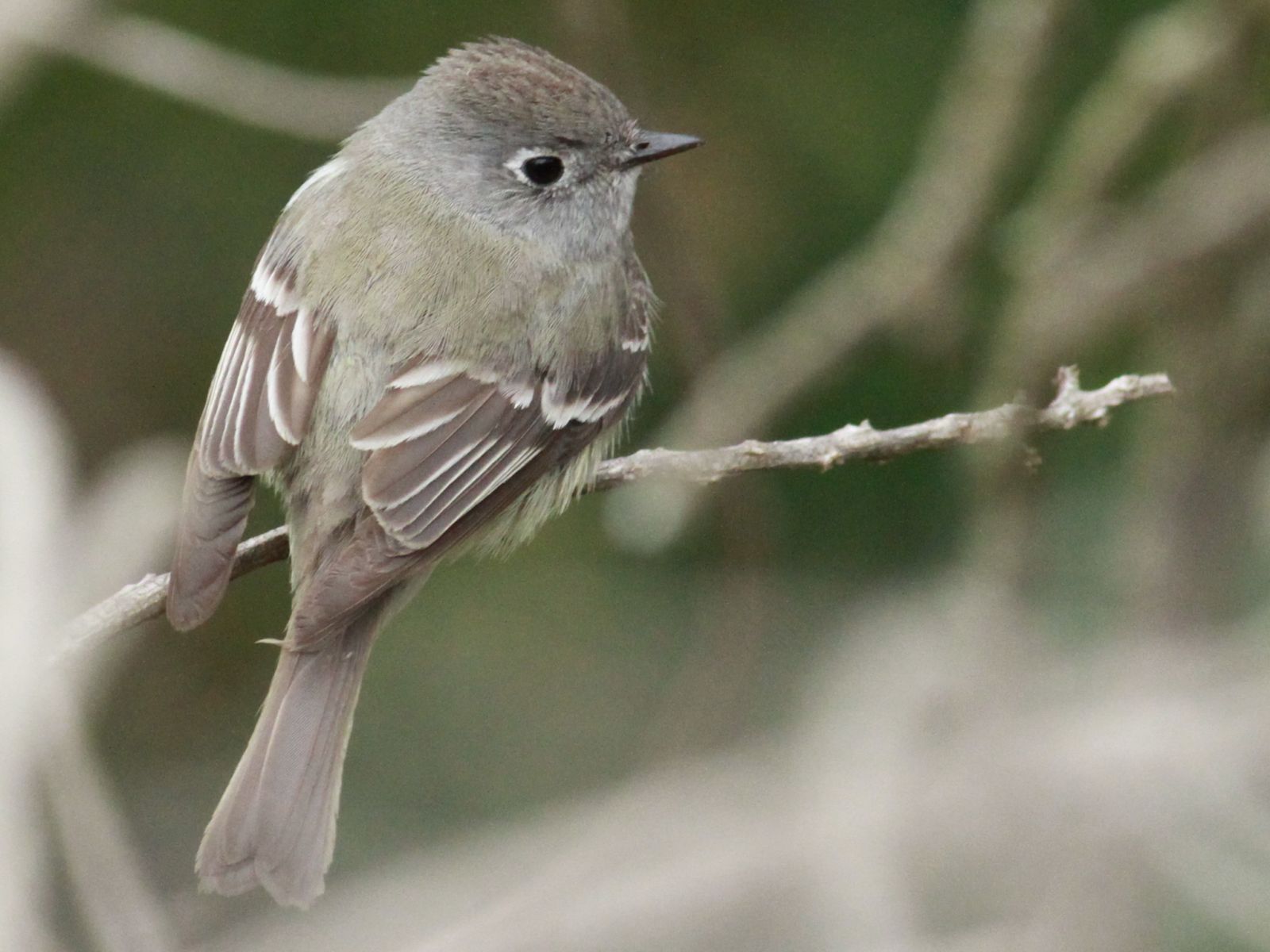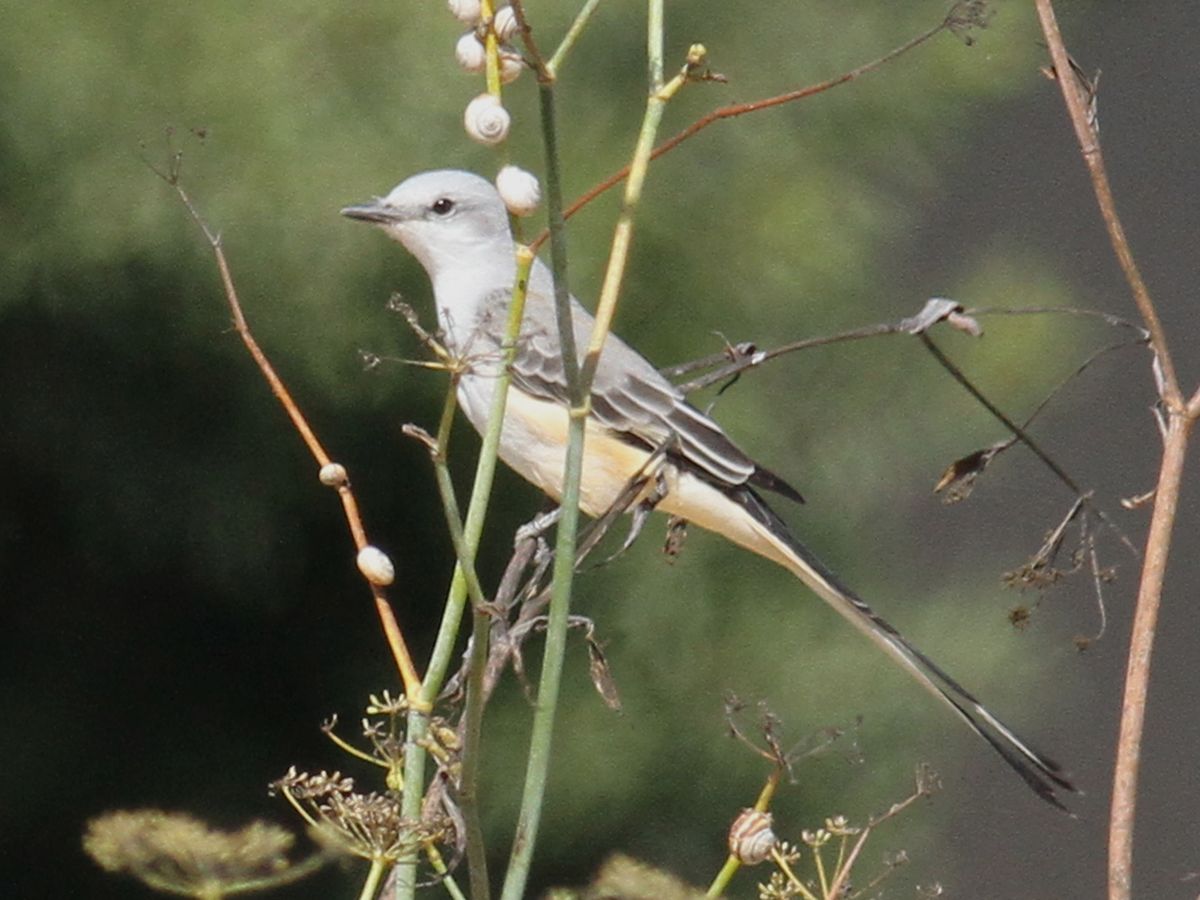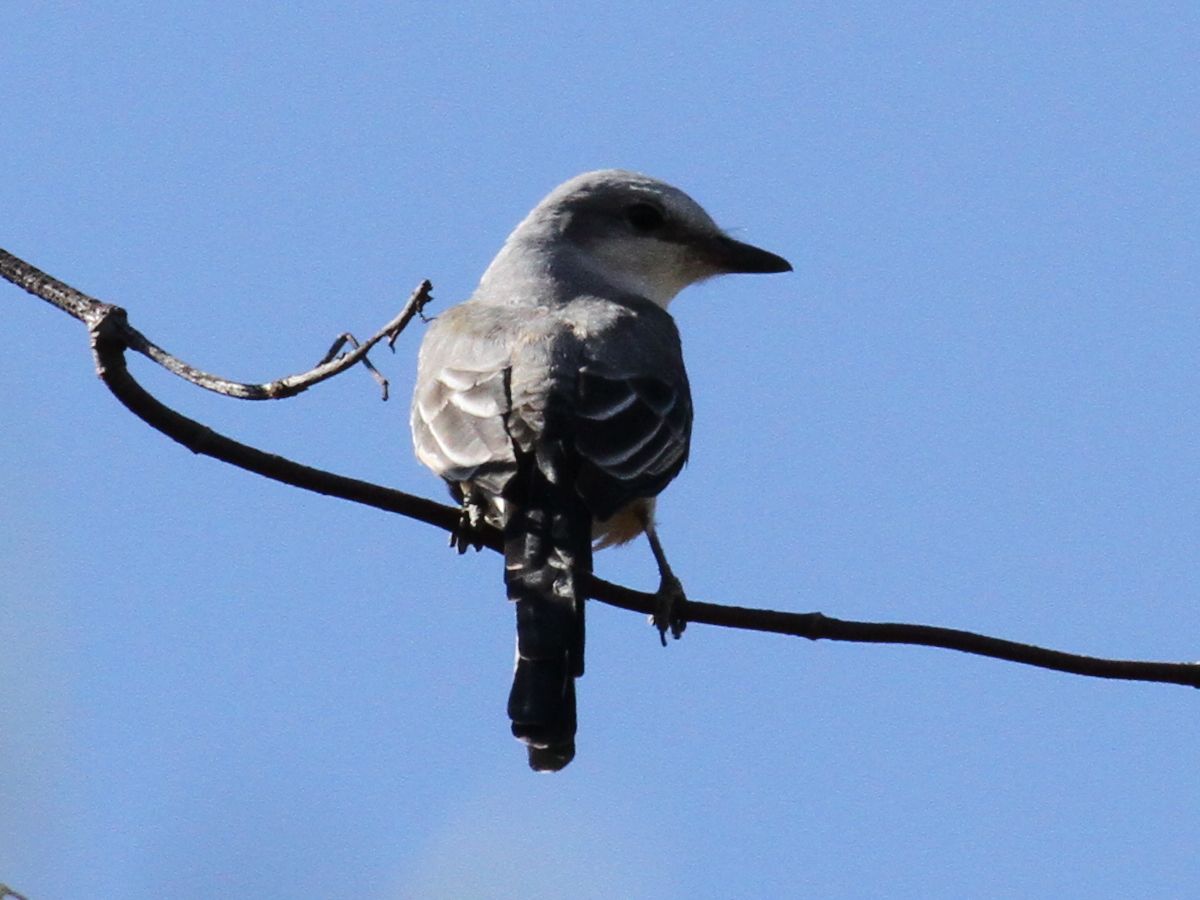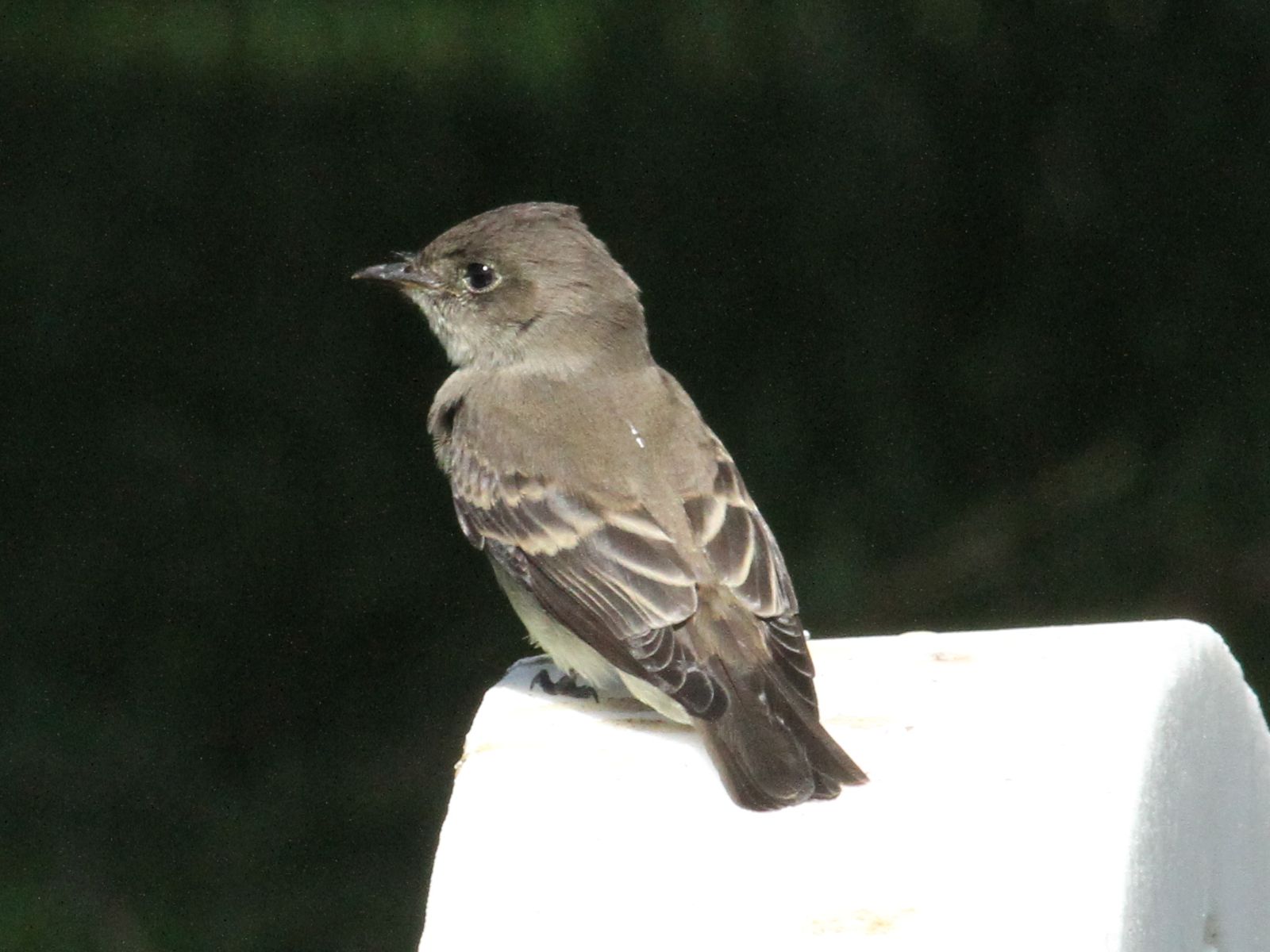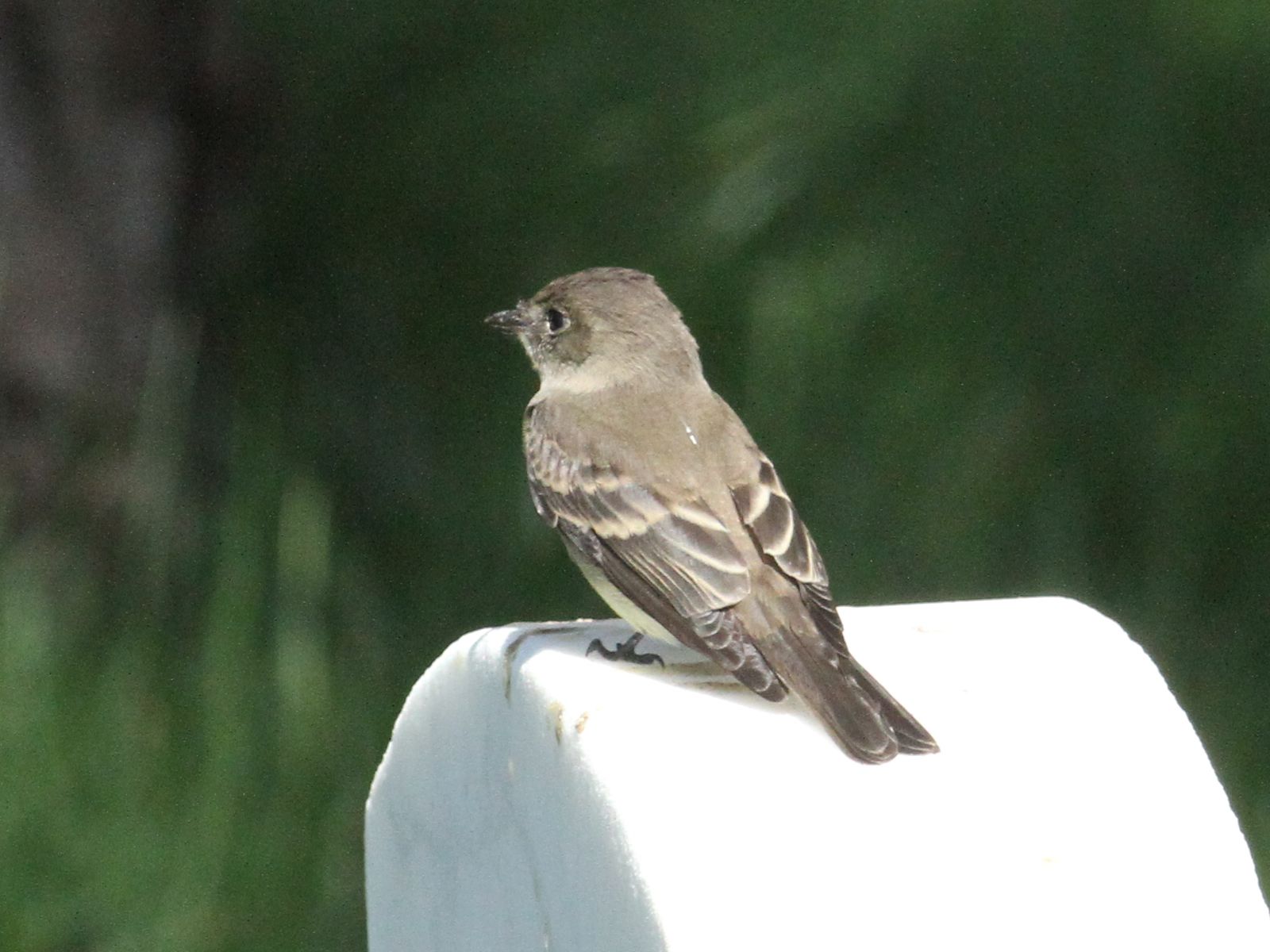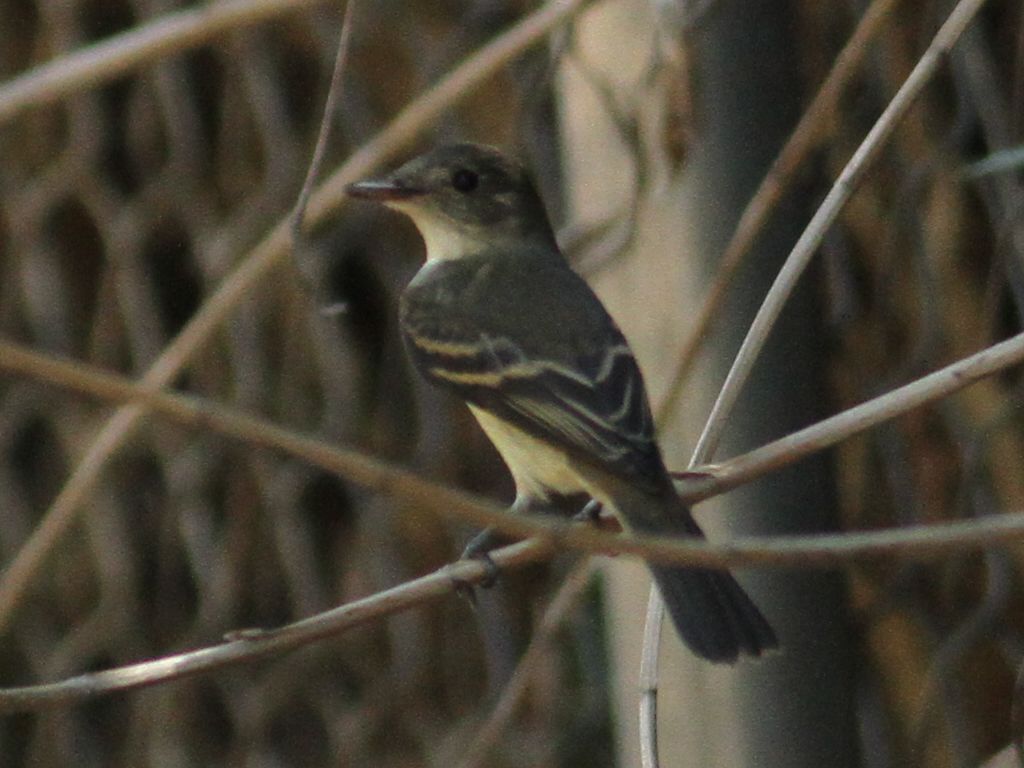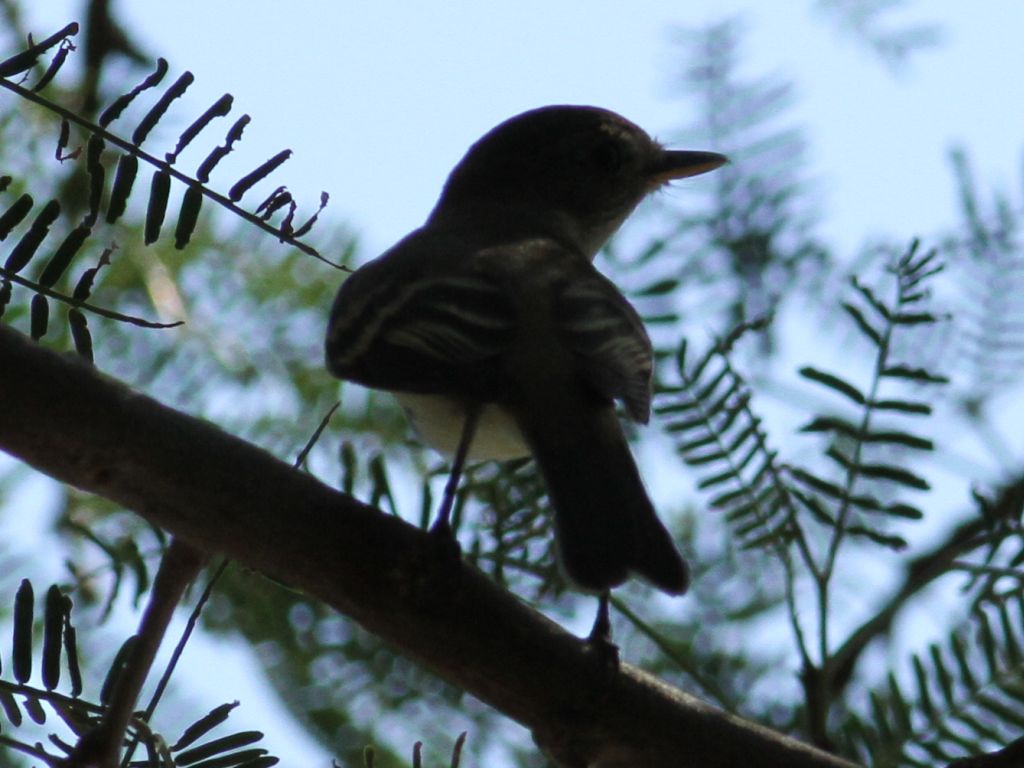[All photographs copyright, Gary Nunn 2013] – While watching the very camera friendly Hammond’s Flycatcher at Fort Rosecrans National Cemetery another dull olive-gray Empidonax, agitated and a lot more frazzled looking, suddenly came flying into the scene next to it. Interacting briefly with the Hammond’s, the new flycatcher then moved off to a distant isolated pine tree before finally returning briefly to feed along the fence line. At first I thought it might be another Hammond’s Flycatcher but its longer tailed look, different head shape, and strong looking bill, made me think again. After examining detailed photographs that show its very short primary projection, relatively scruffy looking plumage, strong bill, and mostly absent yellow coloration on the underparts, this does appear to be a Dusky Flycatcher Empidonax oberholseri.
The photographs below show very well the short primary projection characteristic of Dusky Flycatcher. One can compare it to the the rakish, extremely long, primary projection of Hammond’s Flycatcher (for example, see my previous blog post). In addition the pale whitish patch around the lores area is very evident along with the stronger bill and more rounded head shape. This individual has just begun molting with some patchy new and stronger colored plumage (more olive) scattered around on its body. Much of the underpart feathers appear to be worn looking.
Viewed in ideal lighting conditions the outer edge to the outer tail feather (r6) appears distinctly white in Dusky Flycatcher. The short primary projection and long tail creates the relative impression of about the longest tailed Empidonax there is in my opinion.
It is difficult to capture images from below of Empidonax bills and usually the coloration is next to impossible to see. My only advice is keep taking photographs from all angles underneath the bird! The following images show the characteristic narrower spear-shaped bill and extensive darker coloration of the lower mandible of Dusky Flycatcher. It really only has a pale base. The Gray Flycatcher has a fully pale lower mandible with a small dark tip, while the Pacific-slope Flycatcher is wholly pale and in addition of greater width with a spade shaped morphology.
One novel field character which I believe can differentiate Dusky Flycatcher apart from the confusion species, Hammond’s Flycatcher, is the small overhanging hooked tip of the upper mandible. To my eye it looks like the small hook seen on a vireo bill and is noticeable in the close-up head-shot below. Certainly this hooked upper mandible feature is very difficult to see with binoculars! But I feel I can always notice this hooked tip in photographs of birds that I believe are Dusky Flycatchers. Hammond’s Flycatcher has a smaller bill with more closely meeting mandible tips without the hook present on the upper mandible like Dusky Flycatcher. Maybe a “birding photography” strategy here is to “get as close as you can photographs of the bill tip”! I think it could be very useful for differentiating the two species apart. The hooked tip of the upper mandible can also be clearly seen on photographs of a Dusky Flycatcher that I found at Fort Rosecrans National Cemetery earlier this year. In my opinion Dusky Flycatcher is under reported in San Diego County due to the difficulties of identification. Look for the hook!


